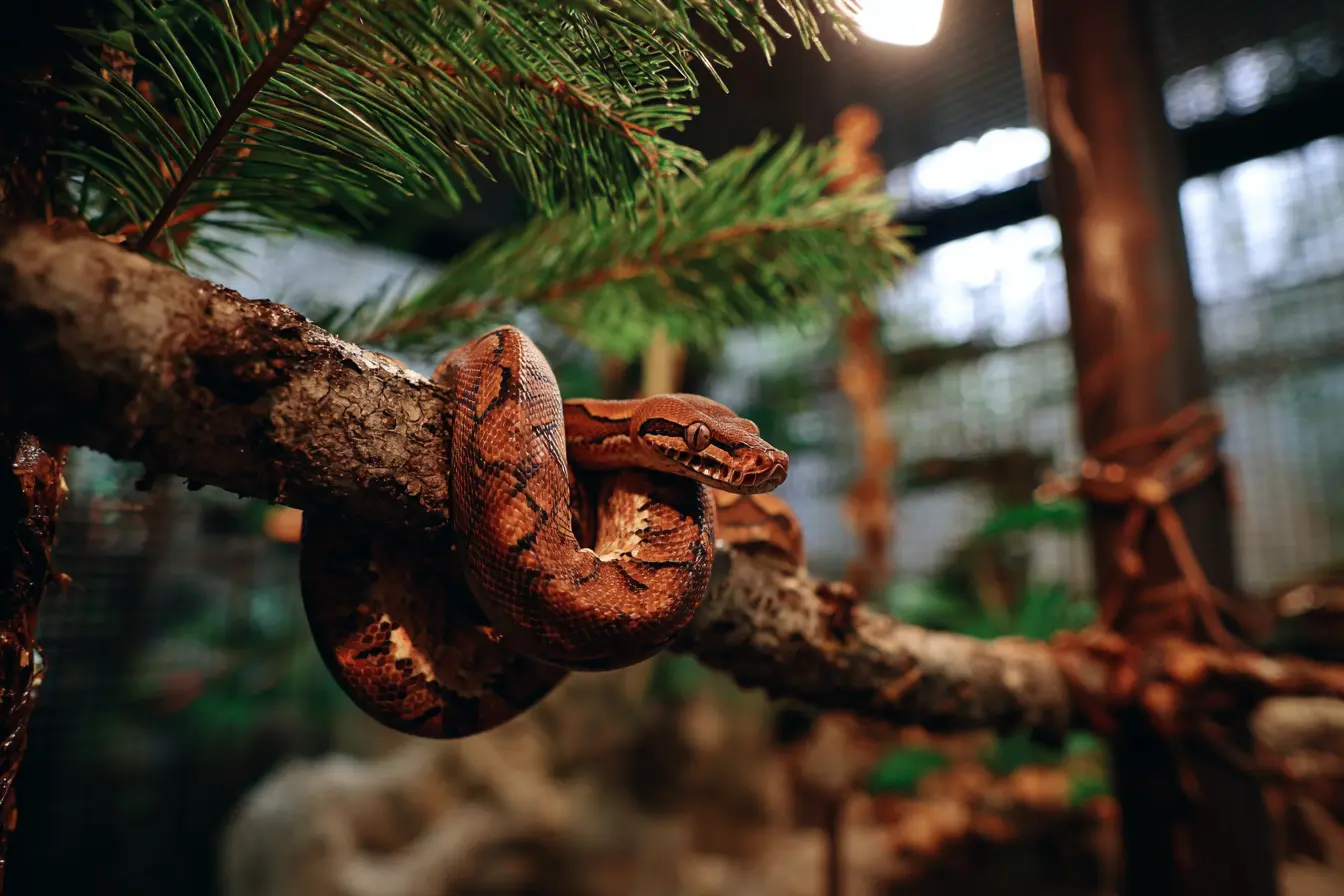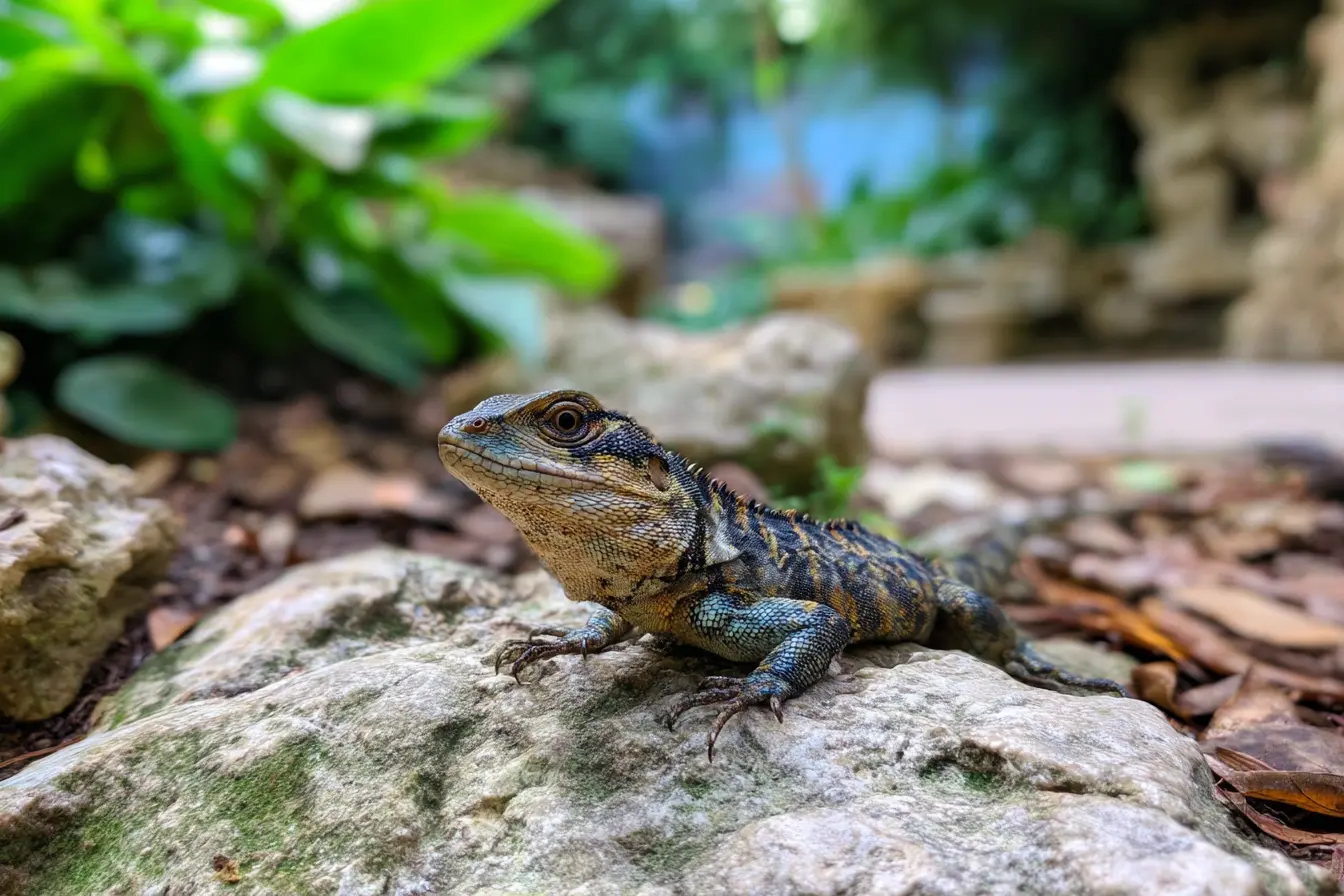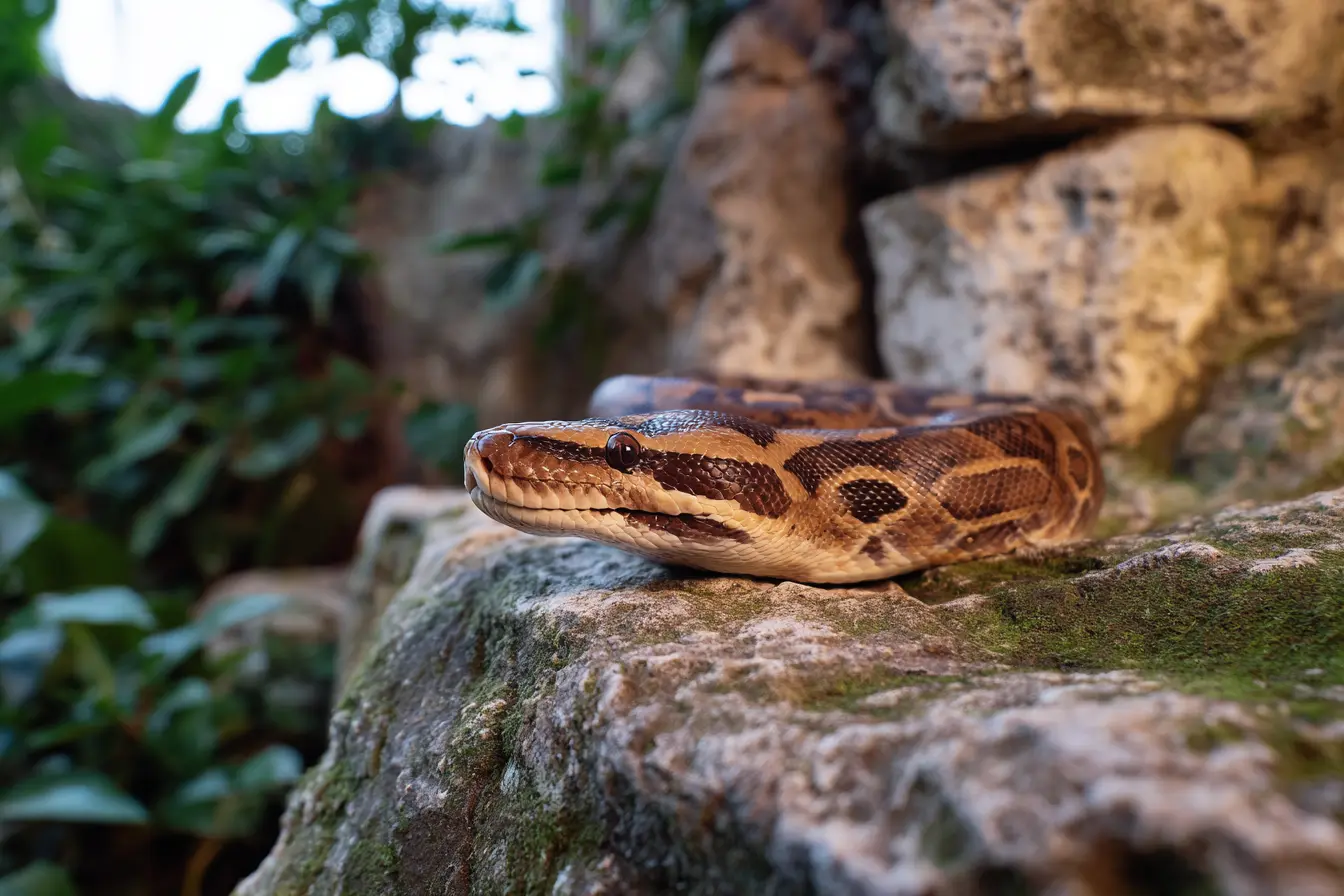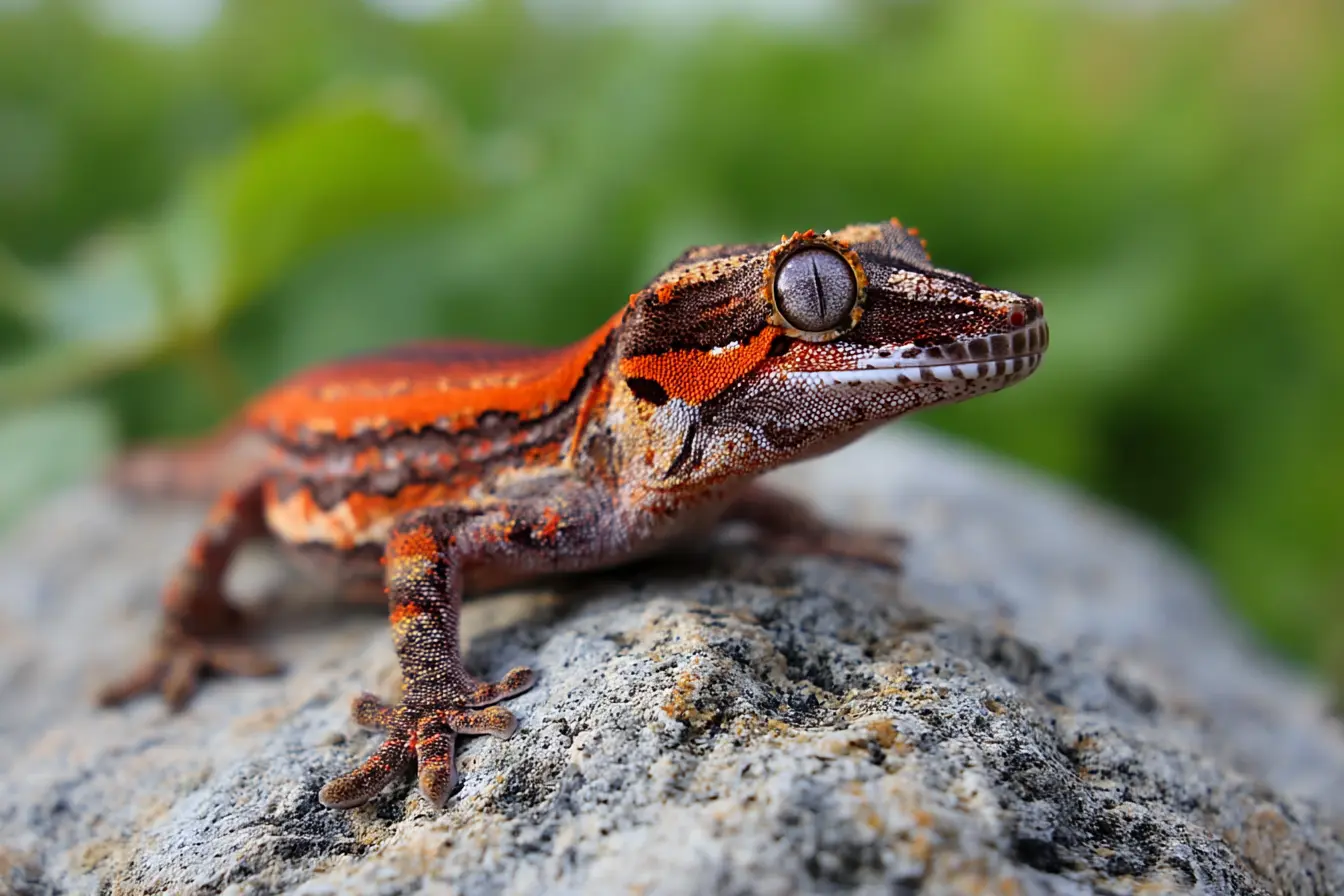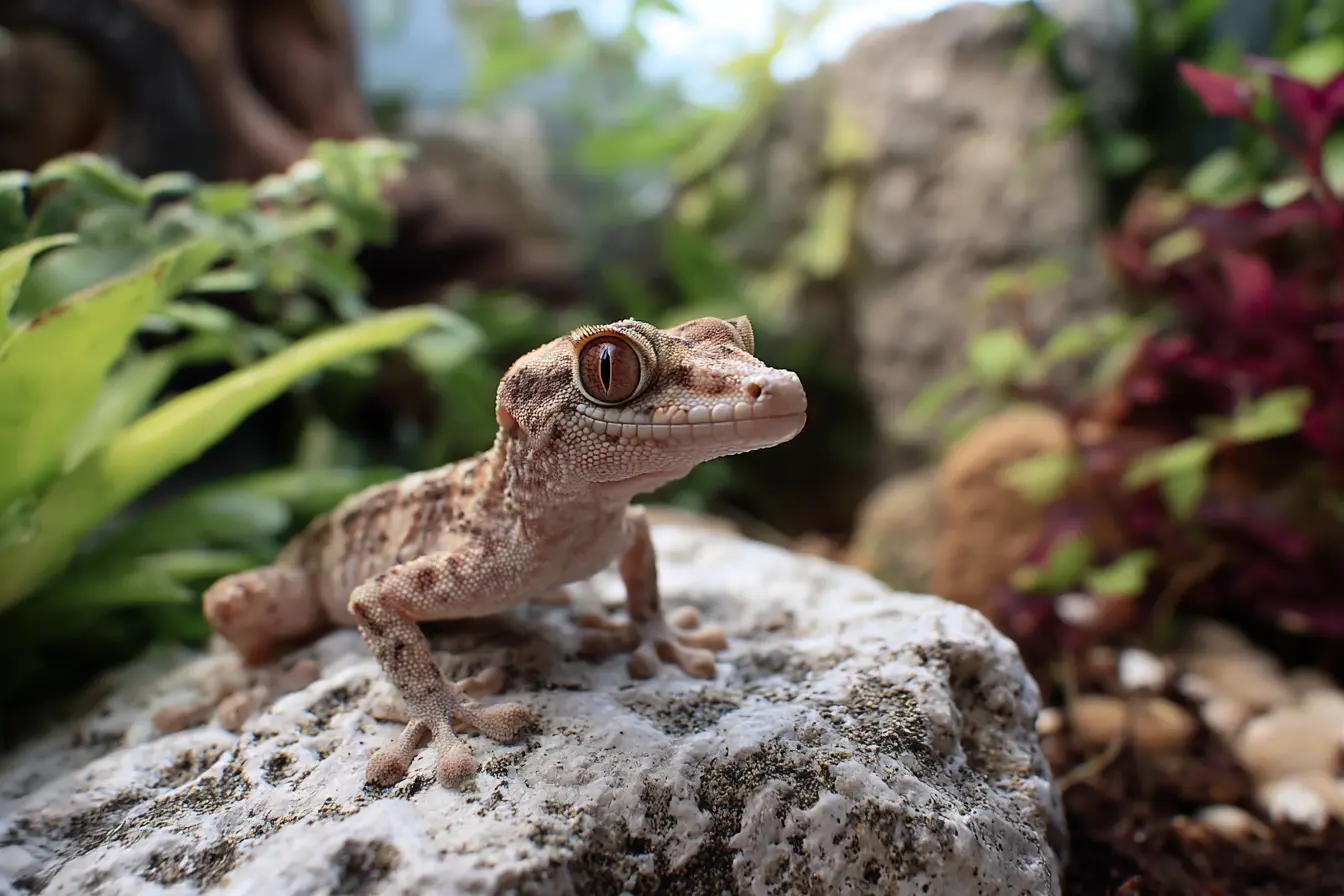
Palm Gecko Care Guide: A Tiny, Tree-Climbing Nocturnal Marvel
The palm gecko, typically referring to species within the Hemidactylus genus such as Hemidactylus palmatus, is a small, arboreal gecko found across parts of Africa and the Middle East. These lizards are masters of climbing, often seen darting up palm trunks or hiding beneath bark and stones in warm, dry environments.
Though not as commonly kept as leopard geckos or crested geckos, palm geckos are hardy, low-maintenance reptiles that offer a glimpse into the fascinating world of nocturnal life. Ideal for patient keepers and naturalistic enclosure enthusiasts, these geckos are best appreciated as display animals.
What is a Palm Gecko?
Palm geckos are small, fast-moving geckos that typically grow to 8–12 cm in length. Their slim bodies, large eyes, and specialised toe pads make them excellent climbers. Colouration varies by species but generally ranges from sandy beige to mottled brown or grey, helping them blend seamlessly into bark and rock.
These geckos are nocturnal and insectivorous, emerging at night to hunt for small prey. During the day, they hide in crevices or under bark. Palm geckos are shy, secretive, and not suited to frequent handling, but they thrive in well-designed enclosures with minimal disturbance.
With proper care, palm geckos can live for 5–8 years in captivity.
Sourcing and Selecting a Palm Gecko
Where to Buy
- Specialist breeders: Rare, but some breeders of African geckos may offer captive-bred palm geckos
- Reptile expos: Look for ethical sellers who specialise in desert or arboreal geckos
- Wild-caught specimens: Often the most available but may require more intensive acclimatisation and veterinary screening
Always prioritise healthy, captive-bred individuals when available, and avoid geckos from questionable sources.
What to Look For
A healthy palm gecko should exhibit:
- Bright, clear eyes
- Active, alert behaviour (especially after dusk)
- Smooth, unbroken skin
- A full tail (though regenerated tails are common in wild-caught individuals)
- No signs of mites, swelling, or mouth rot
Housing and Enclosure Setup
Enclosure Size
These geckos don’t require large enclosures. A vertical terrarium of 30 cm (W) × 30 cm (D) × 45 cm (H) is suitable for a single adult. Taller is better than wider due to their arboreal nature.
Use a secure, escape-proof enclosure with good ventilation.
Substrate
Choose a loose, moisture-retentive but well-draining substrate to mimic their natural habitat:
- Coconut coir
- Organic topsoil
- Sand-soil mix (50:50)
Add leaf litter or moss to encourage hiding and humidity retention.
Décor and Enrichment
Palm geckos thrive in a cluttered, naturalistic setup. Provide:
- Cork bark flats and tubes
- Vertical branches and driftwood
- Rock hides or foam backgrounds with crevices
- Fake or live plants for cover
Creating multiple hiding spots and vertical climbing surfaces is key to reducing stress.
Heating and Lighting
Palm geckos prefer warm conditions with a gentle temperature gradient.
- Basking area (optional): 30–32°C
- Ambient daytime temperature: 24–28°C
- Night-time temperature: 20–22°C
Use a low-wattage basking bulb if needed. As nocturnal geckos, they don’t require intense UVB, but a low-output 2–5% UVB light may support long-term health.
Humidity and Hydration
Maintain humidity around 50–60%. Mist the enclosure lightly in the evening to mimic natural dew—these geckos often lick droplets from leaves and walls rather than drink from standing water.
You may also include a shallow water dish, though it’s not always used.
Diet and Nutrition
Staple Foods
Palm geckos are exclusively insectivorous. Offer a rotating menu of small live insects such as:
- Pinhead crickets
- Flightless fruit flies
- Small dubia roaches
- Calci-worms (black soldier fly larvae)
- Micro mealworms (sparingly)
Feed juveniles daily and adults 3–4 times per week. Remove uneaten prey to avoid stress or injury.
Supplementation
Dust feeders with:
- Calcium without D3 at every feeding
- Calcium with D3 once a week
- Multivitamin once every two weeks
All feeder insects should be gut-loaded with nutritious greens or commercial gut-load formulas 24 hours before feeding.
Handling and Behaviour
Palm geckos are not ideal for regular handling. They’re shy, fast, and can be easily stressed by frequent interaction. However, with time, they may become tolerant of brief, gentle handling.
Handling Tips
- Let the gecko walk onto your hand—never grab from above
- Handle close to the ground or a soft surface
- Limit handling sessions to 5–10 minutes
- Always wash your hands before and after contact
Most of the enjoyment in keeping palm geckos comes from observing their natural behaviour at night.
Common Health Issues
Dehydration
Look for wrinkled skin, sunken eyes, or lethargy. Ensure proper humidity and access to droplets during misting.
Parasites
Wild-caught geckos are prone to internal and external parasites. Schedule a faecal check and mite inspection after purchase.
Shedding Problems
Stuck shed, especially on toes, can result from low humidity. Provide a moist hide or increase misting during shedding cycles.
Calcium Deficiency / MBD
Caused by poor supplementation or lack of UVB. Symptoms include lethargy, soft jaw, and limb deformities. Provide appropriate supplements and lighting.
Always consult a reptile-experienced vet for diagnosis and treatment of health concerns.
Specialist Vet Care
Routine Care
- Annual check-ups
- Faecal screening for parasites
- Weight monitoring and health evaluations
Emergency Signs
Seek immediate veterinary attention if you notice:
- Persistent lethargy
- Rapid weight loss
- Difficulty shedding or moving
- Open wounds or swelling
Care and Maintenance
Daily Tasks
- Mist enclosure in the evening
- Check temperatures and humidity
- Offer food if feeding that day
- Observe gecko behaviour and appearance
Weekly Tasks
- Clean water and food dishes
- Spot-clean waste from the enclosure
Monthly Tasks
- Replace or refresh substrate
- Disinfect hides and décor
- Monitor equipment (thermostat, UVB bulb lifespan)
Final Thoughts
Palm geckos are fascinating, low-maintenance reptiles that thrive in small, naturalistic enclosures. While they’re not suited to frequent handling, they offer keepers the joy of watching natural hunting and climbing behaviours—especially at night.
With the right environment, diet, and respect for their secretive nature, palm geckos can be rewarding additions to a well-curated reptile collection.
Related Vets
Vets near you
Speciality vets
- Aquatics vet specialists
- Birds vet specialists
- Camelids vet specialists
- Cats vet specialists
- Cattle vet specialists
- Deer vet specialists
- Dogs vet specialists
- Equines vet specialists
- Exotic vet specialists
- Goats vet specialists
- Pigs vet specialists
- Poultry vet specialists
- Sheep vet specialists
- Small Mammals vet specialists
- Wild vet specialists
